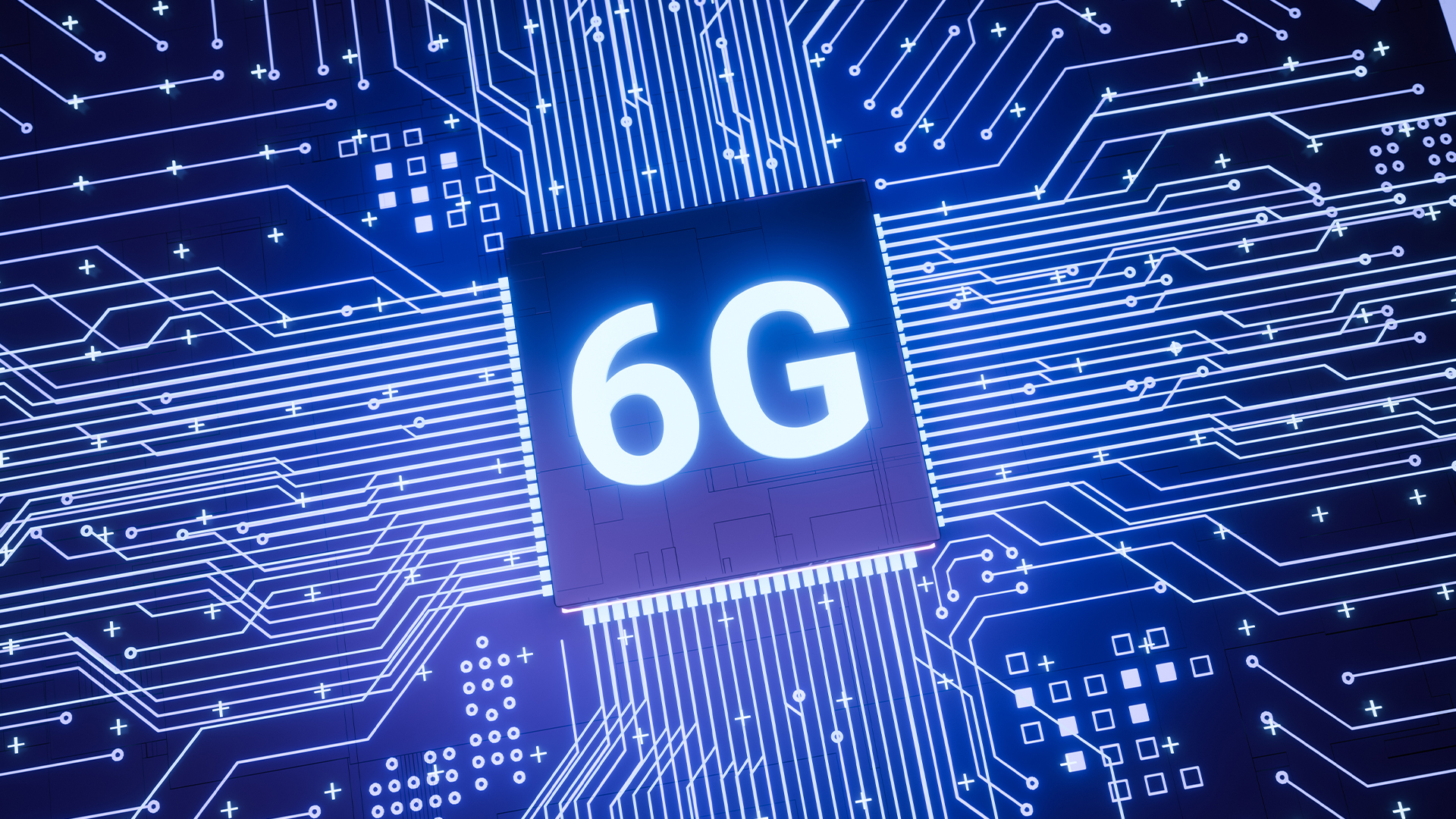Scientists create light-based semiconductor chip that will pave the way for 6G
By combining photonic and electronic components, scientists have built a prototype communications chip that can effectively access high enough radio frequency bandwidths for uses including advanced radar as well as 6G and 7G.

A first-of-its-kind chip architecture that uses both electronic- and light-based components could pave the way for 6G technology.
The research, published Nov. 20 in Nature Communications, offers a blueprint for communications chips needed for advanced radar, satellite systems, advanced wireless networks (Wi-Fi), and even future generations of 6G and 7G mobile technology.
By integrating light-based, or photonic components, into a conventional electronic-based circuit board, researchers dramatically increased radio frequency (RF) bandwidth, while demonstrating improved signal accuracy at high frequencies.
They built a working prototype of the networking semiconductor chip, measuring 0.2 by 0.2 inches (5 by 5 millimeters), by sourcing a silicon wafer and attaching the electronic and photonics components — in the form of "chiplets" — like Lego bricks.
Related: How radar works: The technology made famous by war
Crucially, they also improved how the chips filtered information.
Wireless transceivers send out data, and microwave filters built into conventional chips block out signals in the wrong frequency range. Microwave photonic filters perform the same function for light-based signals. But it's been extremely challenging to combine photonic and electronic components, and effective microwave photonic filters, on one chip.
Get the world’s most fascinating discoveries delivered straight to your inbox.
But by fine-tuning precisely into specific frequencies at higher bands, which tend to be crowded, more information can flow through the chip more accurately, according to the study. This is important for future wireless technologies which will come to rely on higher frequencies. These have shorter wavelengths, and can therefore carry more energy, which equates with a higher bandwidth for data.
“Microwave photonic filters play a crucial role in modern communication and radar applications, offering the flexibility to precisely filter different frequencies, reducing electromagnetic interference and enhancing signal quality," said research team leader Ben Eggleton, pro-vice-chancellor (research) at the University of Sydney.
Devices that tap into 5G networks, like smartphones, transmit and receive data at varying radiofrequency ranges — ranging from low band (under one gigahertz) to high band (24 to 53 GHz) in the U.S, Verizon said.
Higher frequencies allow for faster speeds due to the greater energy capacity of the shorter wavelengths, but there's a higher chance of interference and obstruction. This is because shorter wavelengths struggle to pierce through larger surfaces and objects, also reducing signal range.
Meanwhile, 5G data speeds average 138 megabits per second in the U.S., according to OpenSignal, and carriers run the networks on bands ranging from 2 to 4 GHz. 6G, which is expected to become mainstream by the 2030s will operate on a higher frequency — starting from 7 to 15 GHz, according to the Global Systems for Mobile Communications Association (GSMA).
The highest 6G bands, for industrial applications, however, will need to be above 100 Ghz and possibly even reach 1,000 GHz, according to the University of Liverpool, and speeds could reach a theoretical maximum of 1,000 gigabits per second,
This means there's a need to build communications chips with a significantly higher RF bandwidth, and the advanced filtering to eliminate the interference at these higher frequencies. This is where advancements in chip architecture come in — with photonics playing a key role in the networking semiconductor chips that will be used to power 6G devices.

Keumars is the technology editor at Live Science. He has written for a variety of publications including ITPro, The Week Digital, ComputerActive, The Independent, The Observer, Metro and TechRadar Pro. He has worked as a technology journalist for more than five years, having previously held the role of features editor with ITPro. He is an NCTJ-qualified journalist and has a degree in biomedical sciences from Queen Mary, University of London. He's also registered as a foundational chartered manager with the Chartered Management Institute (CMI), having qualified as a Level 3 Team leader with distinction in 2023.


